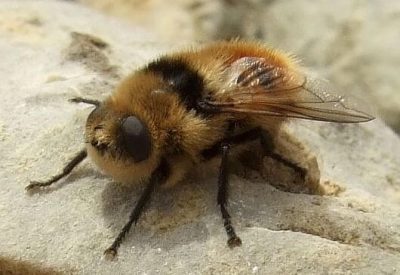Late summer and fall is the time of year when botflies start laying eggs on your horse’s legs. On first glance, the eggs appear as very small clusters of weed seeds or very small grains of rice.Because the eggs feel itchy, your horse will rub its face on its legs. Within five days the eggs hatch into maggots that move into the teeth and gums.
About a month later, they move into the stomach where they become larvae about ¾-inch long. In the spring, the larvae will be passed through the horse’s stool. Unfortunately, the bot larvae rob your horse of nutrients and can even cause stomach ulcers. Your best bet is to remove the eggs from the horse’s legs before they are ingested.
Step 1.  Remove botfly eggs from a horse’s legs daily, or anytime you see them. The eggs are small, about 1/16-inch long, and yellow. The first time you see bot eggs, you may think they are weed seeds. But when you try to brush them off, you will discover that they are nearly impossible to remove with your fingertips.
Remove botfly eggs from a horse’s legs daily, or anytime you see them. The eggs are small, about 1/16-inch long, and yellow. The first time you see bot eggs, you may think they are weed seeds. But when you try to brush them off, you will discover that they are nearly impossible to remove with your fingertips.
With a Bot Block: A bot block is a rough, porous stone, similar to a pumice stone, that rubs the eggs off the horse’s leg. It acts like a coarse scrubber. Sharpen the bot block when it fills up with hair and dirt. Run the edge of the block along a sharp edge, such as a shovel or board.This will clean the edge of the block.
With A Bot Knife: The knife has serrated edges and a specially shaped end that can get into those hard-to-reach places on your horse’s legs. Scrape the bot eggs off with the bot knife away from where your horse grazes. If the eggs drop onto the grass and the horse eats the grass, he or she will also eat the eggs.

Botfly larvae in horse’s gums.
With Your Fingernail: Use your fingernail if you have no tools handy. This is a slow and tedious method. Most people give up before they have removed all the bot eggs.
Step 2: Worm your horse one month after the last killing frost. If you are using a chemical wormer, be sure it kills bots. Many wormers that kill strongyles do not kill bots.
Step 3: Worm your horse again in the spring to catch any late-migrating bot larvae.
Bot Fly Lifecycle Courtesy of Horse DVM
